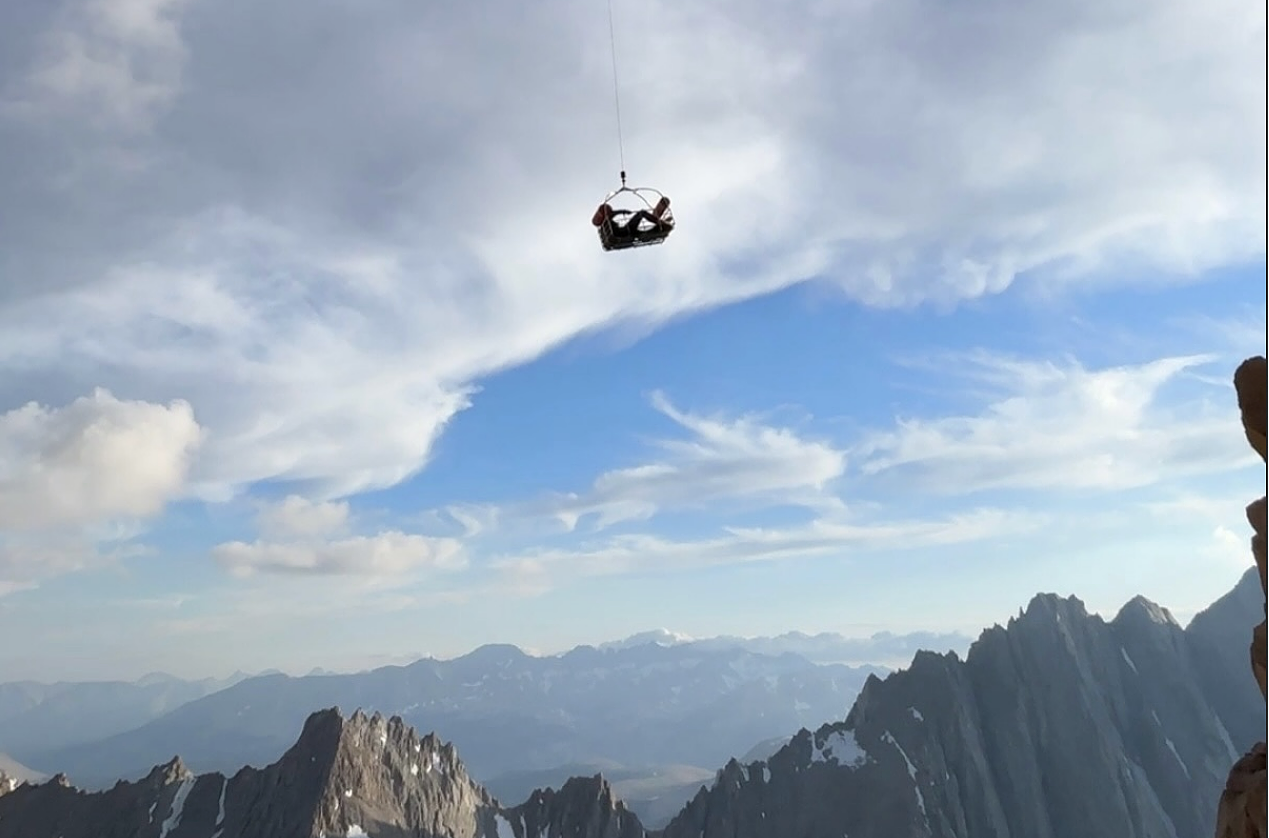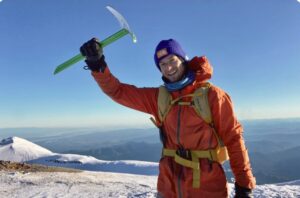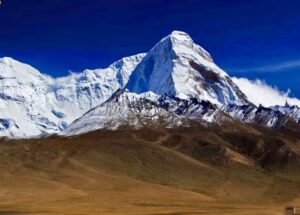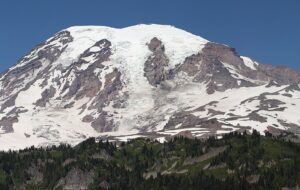Around 3:30 pm on July 2, an SOS signal from a Garmin InReach device reached the California Governor’s Office of Emergency Services. It had been sent from just below the summit of 4,383m Mt. Williamson, the second-highest peak in the Sierra Nevada.
The sender, whose name authorities have not released, had fallen and sustained serious injuries. She also lost most of her equipment. Her situation soon became even more desperate when a thunderstorm rolled in. Lightning menaced her, and lashing rain beat over the area as a multi-agency rescue operation launched. But the weather, her severe injuries, and the difficult location kept her stranded for many hours.
Rescuers with the injured climber on Mt Williamson. Photo: Inyo County Search and Rescue
The woman had been scrambling off-route near the West Chute on Mt. Williamson. While snow-free in July, the nearly 500m chute has sections of loose scree which make it difficult. Mt. Williamson is trickier to summit than the slightly taller Mt Whitney. There is no established trail above 3,000m, and there aren’t many fellow climbers around.
The woman was just a few hundred meters from the summit when she fell, losing her backpack and badly breaking her leg. Over her Garmin, she described the grisly compound fracture — a fracture where the bone protrudes through the skin — and her lack of food, water, and extra clothing.
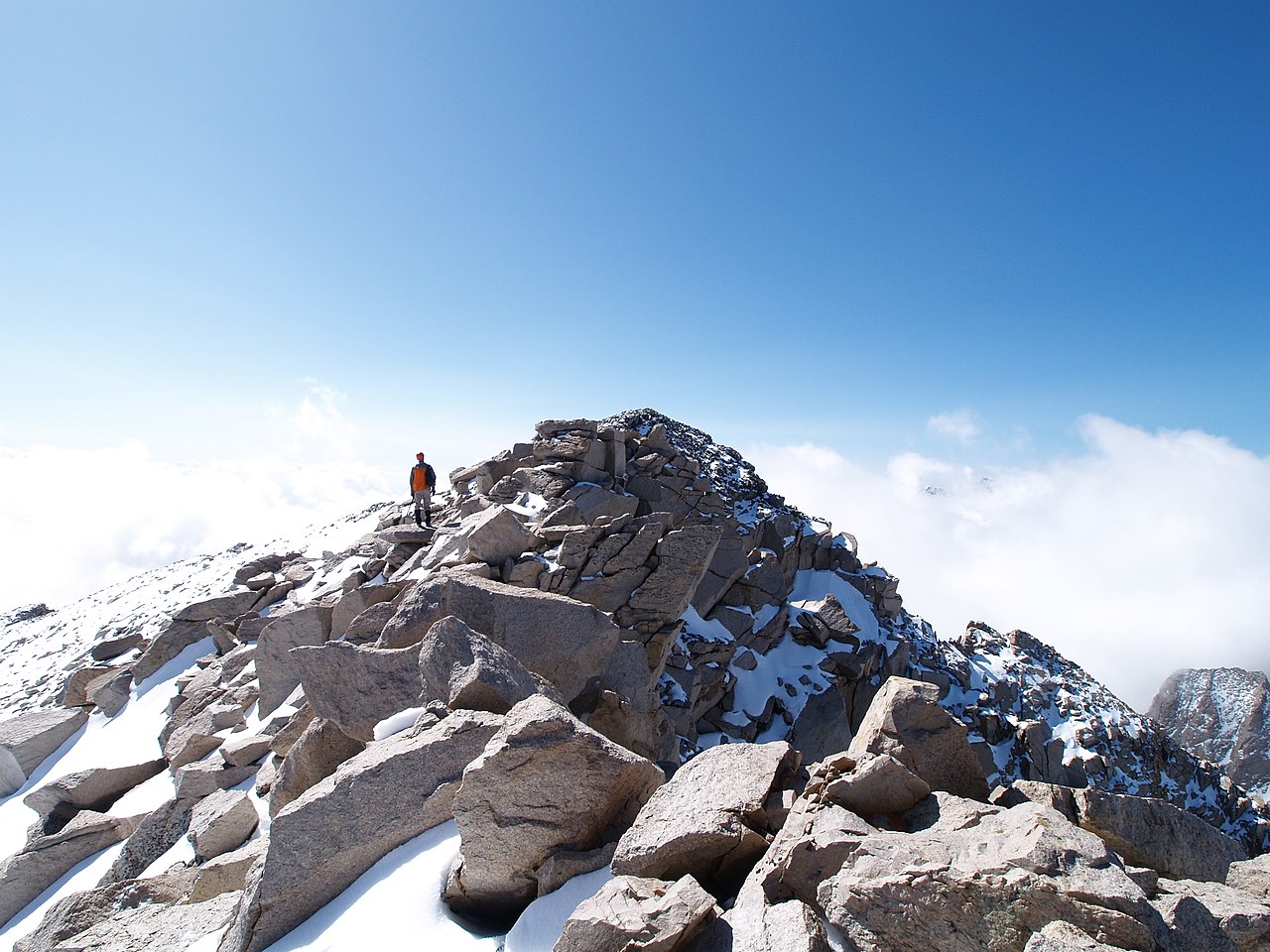
The summit of Mt. Williamson, one of the highest peaks in the contiguous United States. Photo: Wikimedia Commons
A series of helicopter attempts
California Highway Patrol sent an Airbus H125 helicopter to pick up rescue volunteers. By the time rescuers were on board, the storm had fully descended, bringing cloud cover that prevented the helicopter from reaching her.
More resources were called in, and the nearby China Lake Naval Air Weapons Station agreed to lend aid. They transported search-and-rescue workers to Shepherd’s Pass, around 3,000m up, but couldn’t get any closer. This was around midnight. Volunteers proceeded on foot, reaching the bottom of the west face by sunrise.
They were able to call up to the stranded climber, but the terrain prevented them from reaching her. By then, however, the weather had improved somewhat, and the helicopter returned and dropped two rescuers about 100m above her. They carefully made their way down, reaching her 23 hours after her fall.
They still had to get her out. Again, SAR personnel called in more resources. The Los Angeles County Sheriff’s Department’s Air 5 helicopter buzzed over, but the elevation proved too much. Finally, the California National Guard offered their Blackhawk Spartan 164.
SAR workers on the ground carefully moved her into a more open position. Just after 7 pm on July 3, 28 hours after her fall, she was hoisted aboard Spartan 164 and eventually transferred to a hospital.
According to a statement from Inyo County Search and Rescue, the victim displayed “Enormous bravery and fortitude…and all involved were impressed by her ability to remain calm, collected, and alive.”
